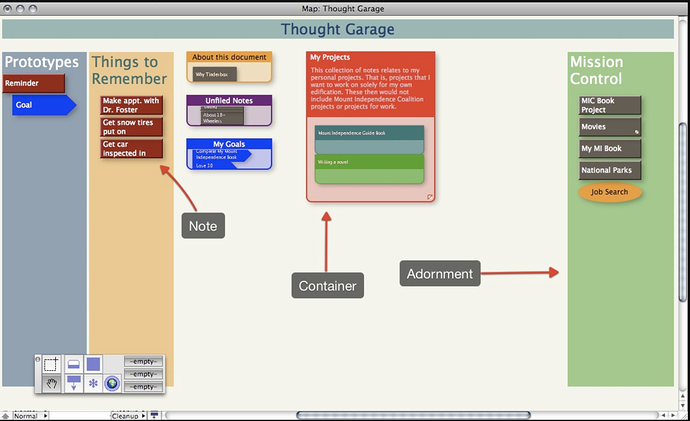Reviving this older comment, to agree with it: something that evolved in my use of the program was finding that – for my particular tastes and working style – adornments were usually the easiest and most effective way to get where I wanted, when operating in a map view.
Many aspects of Tinderbox are optimized for outline-style, hierarchical behavior. The Outline view is based on that, obviously, and Chart and Treemap views use variants of a hierarchical display.
The Map view is fundamentally not designed for hierarchical display. What it shows, in its simplest form, is a group of items all at the same outline level, or within the same container. There are a zillion workarounds for this designed-in limitation, via aliases and “view ports” and so on. A set of links can give a one-level representation of a hierarchy. But fundamentally the map view is doing something different from what most outlines are intended to do.
That is why I generally find adornments a useful way to illustrate what I want in a map view. (Obviously each person’s tastes and styles differ.) But here are a couple of resources showing the possibilities:
From Stephen Zeoli “https://welcometosherwood.wordpress.com/2016/12/06/tinderbox-screencast-part-3-maps-and-adornments/” and “https://welcometosherwood.wordpress.com/2010/01/03/an-introduction-to-tinderbox/”
Eg
And this: “http://forum.eastgate.com/t/adornments-on-adornments/351”
And a bunch more.
